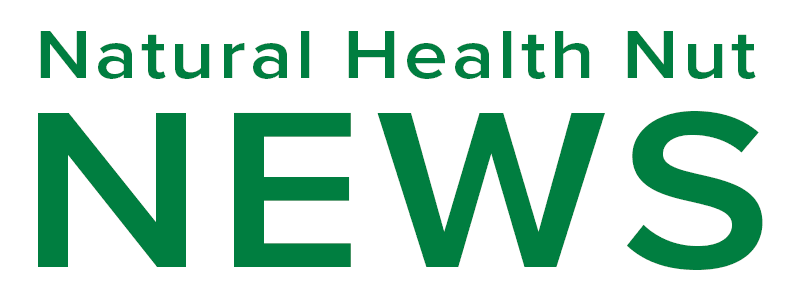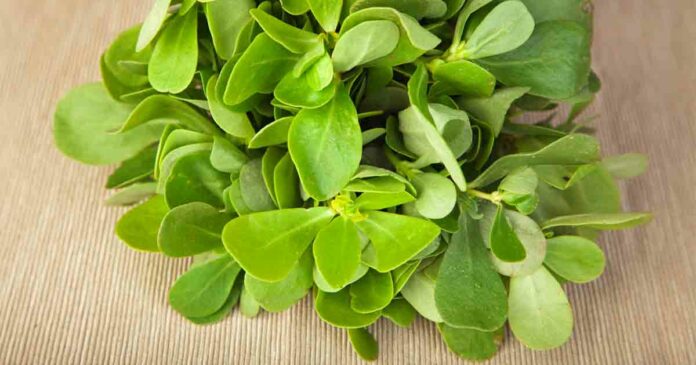Purslane: The Weed With Wholesome Health Benefits

Story at-a-glance
- Purslane has always been regarded as an unwelcomed guest in the gardening world, but it actually has numerous health benefits that you shouldn’t ignore
- Purslane can actually be called a “superfood” because of the vast assortment of vitamins and minerals that can be extracted from this herb
The purslane plant (Portulaca Oleracea) is one of those herbs that sometimes you just can’t decide whether to keep or remove from your garden. It’s often viewed as unwelcome because it pops up beside plants you want to showcase or eat. Purslane has become so widespread in gardens1 today that the U.S. Department of Agriculture has branded it a noxious weed.2
Purslane, which may reach up to 30 centimeters (11 to 12 inches) high, can grow in almost any place, as long as there is loose, sandy and nutrient-rich soil. You can find it in gardens, roads, fields or orchards.3 The plant has a green or red stem,4 spoon-like succulent leaves5 and small flowers with a distinct yellow color. On hot and sunny days, the buds usually open from midmorning until early afternoon.6
But is purslane edible? It surely is. This herb is widely embraced in certain cuisines as a wonderful addition to salads and other recipes.7 In the U.S., however, it’s still seen as an unwelcome plant.8
Remember that if you remove this herb from your garden, you may be casting aside the numerous health benefits that it can actually offer you. In fact, purslane may be called a “superfood” because of the vitamins and minerals that can be found in this herb.9
Purslane’s Many Health Benefits
Owning up to its title as a “superfood,” purslane has a wide variety of vitamins and minerals in its arsenal. It has antibacterial, antiscorbutic (combats scurvy10), depurative (detoxifying and purifying11), diuretic (increases amount of fluids expelled from the body12) and febrifuge (fever-reducing13) properties.14 Plus, you can also receive these beneficial nutrients when you consume purslane:
• High amounts of omega-3 fatty acids15 — The leaves of the purslane plant are abundant in omega-3 fatty acids that may help prevent high cholesterol and blood pressure levels and aid in lowering the risk for heart disease and, possibly, cancer.16 Omega-3 fats also have anti-inflammatory abilities, and they may help manage cognitive function17 and promote normal growth and development.18
• Minerals like zinc, phosphorus, manganese, copper and calcium19 — Zinc is responsible for maintaining and improving immune system function,20 and combating free radicals that may cause inflammation and cancer.21,22 Calcium is also essential for nerve, muscle and blood function,23 and in promoting optimal bone24 and dental health.25
The copper in purslane can help ensure absorption of iron from your intestines, and assist with hemoglobin production in your body.26 Lastly, manganese acts as an antioxidant27 and helps fight off free radicals.28,29 It’s also useful in breaking down fats, protein and carbs to use as energy by your body.30
• Vitamin A — Compared to other leafy vegetables, purslane contains the highest amounts of vitamin A,31 which may be beneficial for improving and maintaining visual health32,33 and cell growth.34 Vitamin A has also been linked to better bone health, although you may need to consume it in moderation to reap this benefit — some studies revealed that too much vitamin A may lead to adverse effects, such as increased fracture risks.35,36
• Low in calories — Purslane contains only 20 calories per 100 grams.37 This is good news if you’re trying to limit your caloric intake. It’s also packed with dietary fiber,38 which helps you feel full after meals, limit your food intake39 and aid in weight loss.40,41
What Is Purslane Used For?
Purslane can actually be used in different ways to help relieve illnesses such as headaches,42 fever and inflammation, to name a few.43 Purslane, when made into a juice, may also be used as a remedy for dry cough and shortness of breath.44
The 16th century English botanist Nicholas Culpeper also claimed that purslane leaves can be placed under the tongue to quench thirst,45 though I would still recommend drinking enough high-quality filtered water to address dehydration.
Aside from these medicinal purposes, purslane can be added to salads, soups, omelets,46 stews, casseroles and tomato sauces.47 The stems and leaves have a crunchy texture and mild flavor,48 which is reminiscent of spinach or watercress.49
How to Grow Purslane
Purslane can be propagated in two ways: through purslane seeds or plant cuttings.50 Tiny purslane seeds, which can be reddish brown to black, can be found in small pods51 that appear in the spring or summer.52 When the seeds become mature, the pods burst and are released into the surroundings.53 The purslane seeds usually take roughly three to seven days to germinate when exposed to temperatures between 70 and 90 degrees Fahrenheit.54
Purslane plants can thrive anywhere, even indoors.55 Here are tips on how to successfully cultivate purslane plants indoors by using seeds, courtesy of the website Garden Guides:56
- Acquire seeds. You can buy purslane seeds online or get them from scattered plants. If you choose to gather seeds from wild purslane, make sure the plants haven’t been treated with pesticides or herbicides.
- Fill a pot with rich soil. You can also add soil from your compost bin as a fertilizer. When planting purslane seeds, make sure that you scatter them evenly on top of the soil. Use your fingers to gently rake the soil and cover the seeds.
- Make sure that you water the soil until it’s moist. While the purslane plant is germinating, moisten the soil every day. Avoid watering the soil to the point that it gets too soggy.
- Place the pot in a location where it can get enough sunlight. Purslane seeds need light to germinate.57 They usually take about two weeks to sprout.
A reminder on purslane plant care: It can become invasive,58 more so if you don’t plant it properly. It’s recommended that you harvest a purslane plant before the flowers appear since the stems may feel tougher afterward.59 Since purslane grows annually, you may need to acquire seeds or stems from your present plants60 to make sure your supply doesn’t run out.
How to Eat Purslane
Purslane can be eaten either raw or cooked.61 The plant’s young leaves and stems are the parts most often consumed.62 If you’re planning on eating raw purslane, make sure the plant is pesticide- and herbicide-free to prevent ingestion of harmful chemicals such as the weed killer, Roundup. As a precaution, wash purslane (no matter what part you use) thoroughly before consuming.63
You can also cook purslane, and there are numerous ways to incorporate this herb into your favorite dishes, cooked or raw. You can boil it in water for 10 minutes, drain afterward64 and eat it alone, add it raw to salads or other recipes for an added crunch,65 or mix into your recipes for soups, omelets,66 stews, casseroles and tomato sauces.67 Just make sure to avoid overcooking purslane, or it can become slimy.68
Purslane Recipes You Should Try
Even though most people don’t know that purslane is a nutritious herb, recipes have started to crop up with it as the main ingredient. This means the herb is starting to gain popularity, and people are becoming aware of its potential in improving human health. This purslane and parsley salad recipe is one way to incorporate this herb into your meals:69
Parsley and Purslane Salad
Ingredients
• 3 tablespoons olive oil
• 1 tablespoon fresh lemon juice
• 1 tablespoon finely chopped shallot
• 1/2-pound cherry tomatoes (preferably assorted heirloom varieties), halved or quartered if large
• 6 cups packed tender purslane sprigs and leaves (from a 1-pound bunch)
• 4 cups packed flat-leaf parsley leaves (from two large bunches)
Procedure
- Whisk together oil, lemon juice, shallot and 1/4 teaspoon each of salt and pepper in a large bowl.
- Add tomatoes, purslane and parsley, gently tossing to coat.
When preparing this recipe, please make sure the other ingredients you use come from organic sources. This will ensure that you’re not ingesting harmful chemicals that are most often utilized in conventional farming.
Sources and References
- 1 Epicurious, July 16, 2015
- 2 USDA Natural Resources Conservation Services, Introduced, Invasive, and Noxious Plants
- 3, 6 University of California Statewide Integrated Pest Management Program, “Common Purslane (Portulaca Oleracea)”
- 4, 9, 16, 19, 31, 42 ScientificWorldJournal. 2014; 2014: 951019. Published online 2014 Feb 10
- 5 “CRC Handbook of Edible Weeds,” February 21, 1992
- 7, 53 University of Wisconsin-Madison Master Gardener Program, August 22, 2011
- 8, 60, 62, 68 University of Illinois, “Purslane – Weed It or Eat It?”
- 10 “American Indian Culture: From Counting Coup to Wampum [2 volumes]: From Counting Coup to Wampum,” September 22, 2015
- 11 “Clinical Naturopathic Medicine,” August 16, 2018
- 12 MedicalNewsToday, November 22, 2017
- 13 Oxford Living Dictionaries, “Febrifuge”
- 14 G.J.B.A.H.S.,Vol.3(1):132-136
- 15 J Am Coll Nutr. 1992 Aug;11(4):374-82
- 17 Curr Neuropharmacol. 2017 May; 15(4): 534–542. Published online 2017 May
- 18 BioMed Research International, vol. 2015, Article ID 925631, 11 pages, 2015
- 20 Am J Clin Nutr. 1998 Aug;68(2 Suppl):447S-463S
- 21 Antioxidants (Basel). 2017 Jun; 6(2): 24. Published online 2017 Mar 29
- 22 Arch Biochem Biophys. 1991 Nov 15;291(1):147-53
- 23 “Practical Applications in Sports Nutrition – BOOK ALONE,” July 26, 2011
- 24 Linus Pauling Institute, “Bone Health in Brief”
- 25 MedicalNewsToday, August 21, 2017
- 26 University of Rochester Medical Center, “Copper”
- 27 Linus Pauling Institute, “Manganese”
- 28 Free Radic Biol Med. 1988;5(5-6):325-33
- 29 Oxidative Medicine and Cellular Longevity, vol. 2018, Article ID 7580707, 11 pages
- 30 “Findings,” March 2005
- 32 Nutrition. 2014 Oct;30(10):1113-21
- 33 JAMA. 1994 Nov 9;272(18):1413-20
- 34 National Institutes of Health Office of Dietary Supplements, October 5, 2018
- 35 Journal of Endocrinology, 239(3), 389-402
- 36 Int J Environ Res Public Health. 2017 Sep; 14(9): 1043. Published online 2017 Sep 10
- 37 USDA Agricultural Research Service, “Basic Report: 11427, Purslane, Raw”
- 38, 44 “The Wild Wisdom of Weeds: 13 Essential Plants for Human Survival,” 2014
- 39 Mayo Clinic, November 16, 2018
- 40 J Nutr Metab. 2017; 2017: 1096015. Published online 2017 Nov 13
- 41 Nutrition. 2005 Mar;21(3):411-8
- 43 “Daily Vegetables in Indonesia,” February 7, 2019
- 45 “The New Healing Herbs: The Essential Guide to More Than 130 of Nature’s Most Potent Herbal Remedies,” July 11, 2017
- 46, 66 “The Herbalist in the Kitchen,” October 1, 2010
- 47, 67 “Edible Wild Plants,” December 1, 2010
- 48 “Fruit and Vegetable Gardening: The Definitive Guide to Successful Growing,” January 30, 2012
- 49 University of Florida IFAS Extension, “Purslane—Portulaca Oleracea L.1”
- 50 The University of Adelaide, “Purslane”
- 51 “Pests of Landscape Trees and Shrubs, Third Edition: An Integrated Pest Management Guide,” February 24, 2016
- 52 Home Guides SF Gate, “Gardening: Purslane Seeds”
- 54 “Seed to Seed: Seed Saving and Growing Techniques for the Vegetable Gardener,” October 31, 2012
- 55, 65 UC Master Gardener Program of Sonoma County, “Purslane”
- 56 Garden Guides, “Purslane Plant”
- 57 “Weed Seed Biology,” January 1, 2013
- 58 “Grow, Cook, Nourish,” July 16, 2018
- 59 “The Encyclopedia of Country Living, 40th Anniversary Edition: The Original Manual for Living off the Land & Doing It Yourself,” December 18, 2012
- 61 The Spruce Eats, March 10, 2018
- 63 “Edible and Useful Plants of Texas and the Southwest: A Practical Guide,” 1999
- 64 “A Field Guide to Edible Wild Plants of Eastern and Central North America,” 1999
- 69 Epicurious, August 2008

